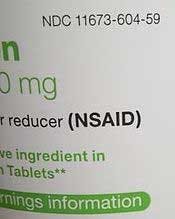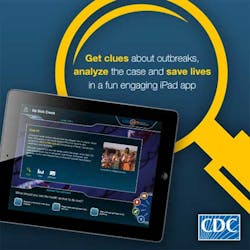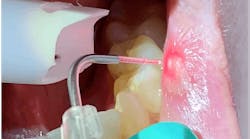iPrevention; How to be a Disease Detective; Esophageal cancer: Are you at risk?; Growing bone?; Peri-implant mucositis and peri-implantitis
Another study showed that those who took statin drugs to lower their cholesterol had a 32 percent reduced risk of developing esophageal cancer.(2) Among a subgroup of Barrett’s patients with high-grade dysplasia, or cellular abnormality, those who took statins had a 59 percent reduced risk of esophageal cancer as compared to those who did not take such drugs. Those with high-grade dysplasia who took both statins and NSAIDs also had an 81 percent reduced risk of esophageal cancer as compared to patients who took neither.(2) Esophageal adenocarcinoma risk is significantly increased with increasing age and cigarette exposure.(3) Abdominal obesity, but not BMI, was associated with a modest increased risk. Continued follow-up of this and other cohorts is needed to precisely define these relationships so as to inform risk stratification and preventive interventions.
Another exciting bit of news … preparations have started for the first known human trial to use embryonic-like stem cells collected from adult cells to grow bone.(7) The cells technology, called VSEL stem cells, or very small embryonic-like stem cells, are derived from adults, not fetuses. This eliminates ethical arguments and potential side effects associated with using actual embryonic stem cells derived from a fetus.
Researchers from the University of Michigan School of Dentistry and New York-based NeoStem Inc. hypothesize that the VSEL stem cells, which imitate properties of embryonic stem cells, can provide a minimally invasive way to speed painful bone regeneration for dental patients and others with bone trauma. Within a year, researchers hope to begin recruiting roughly 50 patients who need a tooth extraction and a dental implant. Before extracting the tooth, U-M researchers harvest the patient's cells, and then NeoStem's VSEL technology is used to purify and isolate those VSEL stem cells from the patient's other cells. For more information, visit the website.(8)
And last, but not least, see the new report on Peri-Implant Mucositis and Peri-Implantitis. Enjoy the issue!!
References
1. Galipeau PC, Li X, Blount PL, Maley CC, Sanchez CA, et al.(2007) NSAIDs modulate CDKN2A, TP53, and DNA content risk for progression to esophageal adenocarcinoma. PLoS Med 4(2): e67. doi:10.1371/journal.pmed. 0040067.
2. Kantor ED, Onstad L, Blount PL, Reid BJ and Vaughan TL. Use of Statin Medications and Risk of Esophageal Adenocarcinoma in Persons with Barrett's Esophagus. Cancer Epidemiol Biomarkers Prev, March 2012, 21; 456.
3. Hardikar S, Onstad L, Blount PL, Odze RD, Reid BJ, et al. (2013) The Role of Tobacco, Alcohol, and Obesity in Neoplastic Progression to Esophageal Adenocarcinoma: A Prospective Study of Barrett's Esophagus. PLoS ONE 8(1): e52192. doi:10.1371/journal.pone.0052192.
4. http://www.cdc.gov/features/solvetheoutbreak/.
5. https://itunes.apple.com/us/app/solve-the-outbreak/id592485067?mt=8.
6. http://www.cdc.gov/EIS/downloads/EIS_FactSheet.pdf.
7. Newswise. Cells Culled From Adults May Grow Human Bone. http://www.newswise.com/articles/view/601132/?sc=dwhn.
8. http://www.neostem.com.
Sincerely,
Maria Perno Goldie, RDH, MS
To read previous RDH eVillage FOCUS introductions by Maria Perno Goldie, go to introductions.
To read more about peri-implant mucositis and peri-implantitis, click here.












